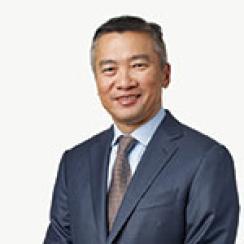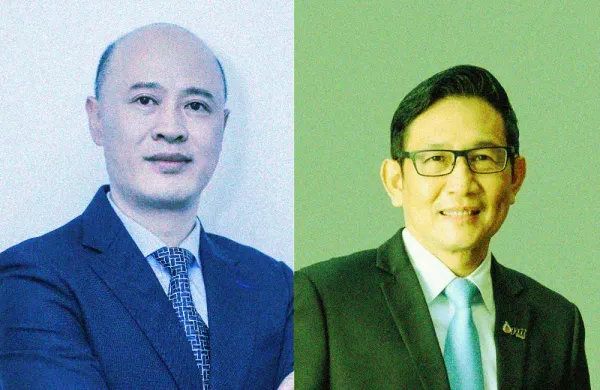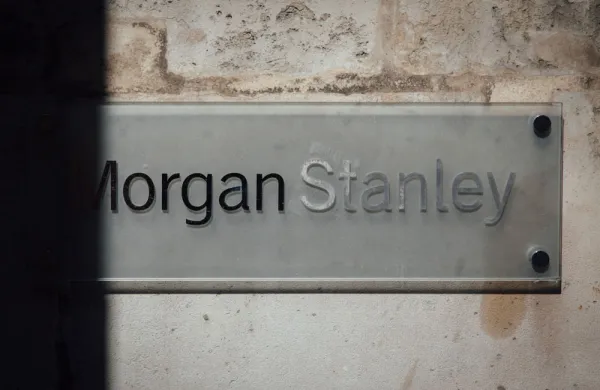To view a PDF of the report, click here.
The launch of the long-awaited ASEAN Economic Community (AEC), approved at the end of 2015, has evolved without a hitch. A new regional trade bloc that boasts more than 600 million consumers and a market worth over US$2.5 trillion is a reality. The challenge now is to persuade foreign investors that the AEC can deliver real results. By Ben Davies

| ||
| H.E. Le Luong Minh, Secretary-General of ASEAN | Manuel V. Pangilinan, Metro Pacific Investments Corp. | Loh Boon Chye, Singapore Exchange |
| “ASEAN has fundamentally shaped the regional architecture by putting it on a firm and assured footing, ready to take on a more ambitious, far-reaching regional agenda.” | “I am hopeful that the positive tone toward infrastructure investment set by the new administration will lead to accelerating development for our country and prompt resolution of past regulatory issues.” | “We are the only exchange to offer the world’s most comprehensive range of Asian equity derivatives, across multiple instruments, services, asset classes and geographies, covering about 95 percent of Asia’s economies.” |
“ASEAN has fundamentally shaped the regional architecture by putting it on a firm and assured footing, ready to take on a more ambitious, far-reaching regional agenda,” says H.E. Le Luong Minh, Secretary-General of ASEAN, a month before the formal establishment of the AEC.
Although frequently criticized as a work in progress, the AEC has set itself lofty goals. Among the most important, it seeks to establish a vibrant single economic market and production base where there is free flow of goods, services and skilled labor. Furthermore, it envisages an environment where capital and investment can move freely over borders.
To achieve its ambitions, the regional bloc which comprises Brunei, Cambodia, Indonesia, Laos, Malaysia, Myanmar, the Philippines, Singapore, Thailand and Vietnam will have to overcome some major stumbling blocks. High on the list are integration and harmonization of labor laws, property rights, investment rules and a host of other regulations. There is also a pressing need for better connectivity in the form of physical infrastructure and cross border transportation networks to reduce the overall costs of doing business.
For all its well-known problems, the AEC has already made solid progress. According to the ASEAN Secretariat, intra-regional tariffs have been virtually eliminated on most goods, while restrictions in the services sector have been gradually removed. Better still, increasing numbers of multinationals are now looking at ASEAN as a single market and adjusting their investment plans accordingly.
Some obstacles will be more difficult to remove. Non-trade tariffs and protectionist barriers remain in force in many countries as governments seek to protect local industries. The situation is compounded by the divergent political systems of the various member countries together with their differing stages of development. While Singapore has GDP per capita of US$56,000, Myanmar’s GDP per capita languishes around US$1,400.
The fact that the launch of the AEC comes against a background of Brexit and heightened uncertainties among members of the EU has only served to highlight the difficulties of full-fledged regional integration.
Far from being fazed, however, supporters of the AEC point out that greater intra-regional trade and closer economic links are likely to benefit all member states. In addition, they say that the AEC is well positioned geographically to serve China, Japan, India, Korea and Australia. ASEAN has already signed free trade agreements with all these countries.
How long it will take to achieve full integration of banks and financial services around the region, given fierce local opposition, is uncertain. Still, with ASEAN economies still offering high growth potential, even the most vocal critics of the AEC accept that its launch marks an important step in the right direction.
Philippines
Following a landslide win in elections held in May, Philippine President Rodrigo Duterte has taken the helm of one of Asia’s fastest-growing economies. His bold campaign pledges to clamp down on corruption and boost law and order have made the political outsider something of a hero among many Filipinos frustrated by years of slow progress on both fronts. Yet his firebrand rhetoric and the combative manner in which he has launched his war on drugs have raised red flags among foreign investors who see him as unproven, rough at the edges and in the words of one investor “a little scary.”
The good news is that Duterte, a former lawyer, does have a track record of supporting business. As mayor of Davao City, he presided over some of the highest economic growth rates in the country. For 2014, growth in Davao reached 9.4 percent. That compares with 6.1 percent for the Philippines as a whole. One factor behind the strong performance has been a dramatic improvement in Davao’s business climate. Thanks to stringent measures on law and order, crime went down and local confidence soared. According to Teresita Sy-Coson, vice chairperson at SM Investments Corporation, Duterte shortened the timeframe for securing all types of business permits in Davao and focused on getting rid of corruption in the city’s offices. His jubilant supporters now hope he will replicate the same business model on a nationwide scale.
Since being sworn in to office on June 30, the President has called for the radical devolution of power from the central government to the provinces in a bid to reduce poverty and end the country’s long-running Muslim insurgency in the far south. He has also outlined an economic plan that provides continuity with the previous Aquino administration on business and investment policies.
High up on his economic agenda are plans to maintain spending on infrastructure at 5 percent of GDP and expedite the public-private partnership infrastructure program to address today’s bottlenecks. He has also called for an easing of foreign ownership limits to boost the attraction of the Philippines and he also wants a major overhaul of the tax system.
Other ambitious plans include modernization of the agricultural sector, better security of land tenure and expanded training programs aimed at strengthening the basic education system.
On paper at least, the proposals sound good. But in a nation that has had more than its fair share of broken promises from politicians, the real question is whether Duterte is up to the job.
Already, many analysts are prepared to give him the benefit of the doubt. “Duterte’s 8-point economic agenda ticks the right boxes,” says Sumedh Deorukhkar, senior economist for Emerging Asia at BBVA Hong Kong. “It is wide-ranging and attempts to leverage upon Aquino’s good work by expediting PPP-enabled infrastructure development, introducing critical legislative reforms to attract greater FDI across sectors,” he says. “It aims to address governance issues across key revenue generating departments and focus on capacity-building and productivity improvements in the agricultural sector.”
Some business executives have been quietly encouraged by the President’s commitment to continued overhaul of the country’s decrepit infrastructure. “I am hopeful that the positive tone toward infrastructure investment set by the new administration will lead to accelerating development for our country and prompt resolution of past regulatory issues,” said Manuel V. Pangilinan, chairman of Metro Pacific Investments Corporation, a publicly listed investment and management company.
Yet one of the biggest challenges that the new President faces is that his predecessor Benigno Aquino set the bar high. After years as the ‘sick man of Asia’, Aquino restored investors’ faith in the Philippines with an impressive list of reforms ranging from a sharp reduction in the country’s yawning deficit, improved spending on roads, bridges, ports and airports and the closing of tax loopholes.
In 2015, the economy grew at 5.9 percent, one of the fastest clips in Asia. In the second quarter of 2016, it did even better, expanding by a record 7 percent. That was partly due to election spending and an increase in public and private investments. Unemployment remains less than 6 percent. Inflation has stayed below the central bank’s 2-4 percent target. Domestic interest rates are low. Many fiscal and monetary policies, albeit unpopular, have boosted financial markets and led to increased monetary stability.
In April, Fitch Ratings affirmed the Philippines’ Long-Term Foreign- and Local-Currency Issuer Default Ratings at ‘BBB-’ and ‘BBB’ respectively, with a “Positive” outlook. The report noted a sharp decline in the level of government debt as well as a lower fiscal deficit. Foreign exchange reserves remain strong.
Yet the Philippines is also expected to face headwinds in the form of slower global growth as well as the impact of prolonged drought on the agriculture sector.
Despite the positive indicators, many observers will want to see greater evidence that the new President is serious about continuing reforms before they raise their weightings in the country’s financial markets.
Thailand
Foreign investors, hoping for signs of increased political stability in Thailand, had eagerly awaited the results of the August 7 referendum on the country’s newly drafted constitution. In the event, they were not disappointed. The final tally showed that around 61 percent of voters agreed to accept the new constitution while some 39 percent voted to reject it. The results have been widely seized upon as proof that most people are satisfied with the political ‘road map’ laid down by the military, which seized power in May 2014.
The approval of the charter means that Prime Minister Prayut Chan-o-cha and his military appointed government will remain in power until relevant organic laws are put in place and a new general election is held. This is likely to happen sometime before the end of 2017. Besides offering the prospects of improved stability, in the short term anyway, the results are likely to boost investment sentiment and provide a shot in the arm both for the stock market and the economy.
“We believe that the referendum result is the best possible outcome,” says Kasem Prunratanamala, head of research at CIMB Securities in Bangkok. “With a more stable government likely to take office after the election, we expect private sector confidence to improve. Given this and the recent positive developments in infrastructure projects, we believe the economic outlook is more positive for the next year.”
Rakpong Chaisuparakul, a research manager at KGI Securities agrees. “As the Thai constitution passed the national referendum, expectations for a 2017 election should rise to another level, boosting foreign investor interest in the Stock Exchange of Thailand,” he says.
At least with the referendum out of the way, the country’s leaders can now focus on more pressing economic matters. High up on the government’s wish list are a long list of infrastructure projects that aim to kick start the economy and boost private investment. They include three Bangkok mass transit lines, two highway networks and two high-speed railway routes, as well as expansion of the Laem Chabang deep sea port and a new terminal at Suvarnabhumi international airport. Seven public-private partnership (PPP) projects worth Bt582 billion are being fast tracked with bids expected to be called by the start of next year.
“We expect the current government to accelerate infrastructure project bidding,” says Thapana Phanich, a research analyst at Deutsche Bank Tisco Investment Advisory, adding that a return to civilian rule “may help stabilize Thailand’s political situation.”
Another urgent task for the military-installed government is to restore foreign investor confidence in Thailand, which has suffered from years of political uncertainty as well as growing competition from neighboring countries. Applications by foreign companies seeking investment promotions last year tumbled to Bt56.8 billion from Bt382 billion the previous year, according to the Board of Investment of Thailand. The sharp fall is believed to reflect both higher wages in Thailand compared with countries like Vietnam, Cambodia and Myanmar as well as the outdated structure of Thai industry.
Fortunately, the economy has started to pick up. GDP rose by 3.5 percent in the second quarter of 2016 compared with the previous year, mainly as a result of government stimulus measures, improving household consumption as well as a strong performance by the tourism sector. The authorities are projecting 32 million international tourist arrivals this year, up from 29.8 million in 2015. Thailand’s farming sector is also showing signs of recovery. For the full year, the Bank of Thailand (BoT) expects the Thai economy to grow at 3.1 percent. But the BoT also warns of “downside risks from weak demand from trading partners, diminished financial capacity of households to cushion future economic shocks due to elevated debt levels, and the fragile confidence of the private sector.”
Most economists are predicting that next year’s GDP growth rate will be in the range of 2 percent to 3 percent. That’s still well below the level for almost every other country in the region.
Foreign investors have once again become net buyers of Thai equities. Thai shares have surged by almost 20 percent this year, making the SET index one of the top performers in Asia. But despite the solid performance by many corporates and widespread relief over the outcome of the referendum, few observers expect the political problems to go away. Consequently, investors in Thailand are likely to have to live with a considerable level of uncertainty for many years to come.
Singapore
By virtually any measure, the undisputed financial hub of ASEAN is Singapore. Fifty years after the island nation gained independence, financial services account for about 25 percent of GDP. Singapore’s banks top the ASEAN leagues in almost everything from syndicated loans and wealth management to trade finance and foreign exchange, while its capital markets are ranked alongside the best in the world for transparency and corporate governance.
DBS is the largest bank in Southeast Asia, with more than 280 branches in Asia. Nor is it only the banks that play a dominant role. Singapore is the leading insurance center in the region. Meanwhile the island nation stands out as a role model for its rule of law, clear regulatory frameworks and disdain for corruption.
Far from being complacent, the government continues to push for greater innovation to ensure that Singapore remains in the forefront of financial market development. In June, the Singapore Exchange (SGX) announced that all listed companies would have to publish a sustainability report at least once a year.
The new regulatory requirement aims to meet the growing interest in sustainability from shareholders worldwide. “Innovation is in the DNA of SGX and has been for more 30 years,” says Loh Boon Chye, chief executive officer. “It is why we are the only exchange to offer the world’s most comprehensive range of Asian equity derivatives, across multiple instruments, services, asset classes and geographies, covering about 95 percent of Asia’s economies.”
But there are clouds on the horizon. GDP grew at 2.1 percent in the second quarter of 2016. The weaker-than-expected performance reflects the slowdown in China, the uncertain global environment and Singapore’s high dependence on trade. According to the Ministry of Trade and Industry, the economy is expected to grow at 1 percent to 2 percent for the full year compared with an earlier forecast of 1 percent to 3 percent.
The outlook for next year is similar, with most estimates ranging from 2 percent to 2.5 percent. Still, for many investors, Singapore stands out as a symbol of what other ASEAN countries should aspire to if they are to succeed in the fiercely competitive world of global trade and investment.





